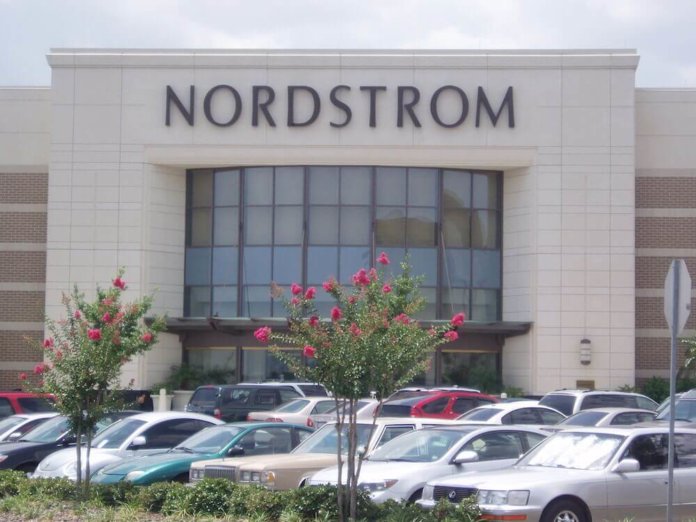
The news was even bleaker than expected. Following the closure of 141 stores in 2017, JC Penney’s Q2 revenue in 2018 dropped by another 7.8 per cent, translating in a net loss of $101 million. Even after taking such drastic measures to cut losses, the dire situation was only getting worse – the retailer had lost less than half this amount in the same period of the previous year. As a result, JC Penney shares plummeted 27.4 per cent to an all-time low of $1.75.
JC Penney is by no means alone. For many retailers, results like these have become the norm. In what is colloquially known as the retail apocalypse, store closings, bankruptcies, and corporate restructuring are common.
The industry landscape makes Nordstrom’s 2018 Q2 announcement all the more astonishing. They reported a 4 per cent increase in sales, and their share price has grown from $38.50 on October 30, 2017, to $61.56 on August 20, 2018.
Nordstrom Co-President, Blake Nordstrom, commented, “The strength of our inventory position allowed us to be fluid and respond quickly. We took swift action to accelerate inventory turns, strengthen our core assortment, and improve our execution in stores.”
Inventory position and response fluidity have been instrumental to the retail giant’s upward trajectory despite industry downturn, but there’s more to it than that. Nordstrom’s solid foundation of excellent corporate culture cannot be ignored.
Nordstrom: A Golden Legacy
John W Nordstrom immigrated to the United States in 1887 from Sweden at the age of 16. Ten years later, he struck gold in Canada’s Klondike Gold Rush and returned to Seattle with a healthy nest egg, which he used to open a shoe store with partner Carl Wallin. In 1923, Wallin and Nordstrom decided to expand, opening additional branches. By the end of the decade, Wallin had sold his share to the Nordstrom family after a disagreement and Wallins was dropped from the name.
John’s sons, Everett, Elmer, and Lloyd Nordstrom ran the business together up until the 1970s. Nordstrom’s slowly became a national institution and in 1963, diversified by adding apparel to their product line. In 1971, the company went public on the NASDAQ.
Nordstrom’s entrepreneurial origin story is not radically different from many of the other retail giants of the 20th century – what sets Nordstrom apart is how the business was built to withstand disruption.
The Retail Apocalypse
Appreciating the significance of Nordstrom’s sustained growth necessitates a greater understanding of the recent downturn in conventional retail.
According to research from AlixPartners, 2017 saw at least 26 major retailers file for bankruptcy. The trend is not letting up either, Investopedia declared 2018 the year of retail bankruptcies.
The obvious explanation is the rise of online shopping. Amazon is at the heart of this global trend with sales ballooning from $16 billion in 2010 to $80 billion in 2016.
However, in a piece for The Atlantic, Derek Thompson espouses a theory that seems to align with the attitudes and behaviours of the millennial generation.
“There is a social element to this too. Many young people are driven by the experiences that will make the best social media content…These sorts of questions, ‘What experience will reliably deliver the most popular Instagram post,’ really drive the behaviour of people ages 13 and up.”
Thompson points to the fact that since 2005, sales at food services and drinking places have grown twice as fast as all other spending- a tangible result of the superficial need to be seen having fun.
So how has Nordstrom survived the apocalypse?
Outstanding Customer Service
To say Nordstrom wrote the book on customer service is not just a figure of speech. After setting the benchmark for top tier customer service, the company shared its experience in the 1996 publication, The Nordstrom Way, which includes insights such as:
“…Create an atmosphere where people feel valued, trusted, respected and empowered, where they have a proprietary feeling and an entrepreneurial spirit. The magic occurs when all these things come together.”
Their commitment to customer service manifests in many ways, from their inimitably cheerful staff to their no questions asked return policy. It’s a crucial factor when it comes to customer retention.
Mastering The Digital Channels
Opportunising disruption is a significant feat in any industry. Whereas other retail giants were in denial about the threat of online shopping, Nordstrom took swift action and built a digital retail platform. They were one of the first retailers to launch an online presence.
The investment is paying off – their 2018 Q2 digital sales numbers back this up. Nordstrom saw a 23 per cent increase in digital sales, representing 34 per cent of their total sales. In comparison, Macy’s and Kohl’s do 16 per cent of their business online while JC Penney is at 14 per cent.
It’s not just about selling products through their website, Nordstrom has also used social media as a source of free marketing information. Items that gain traction on social media sites like Instagram and Pinterest are featured prominently on their in-store sales floor. They’ve even made it possible to buy products on Instagram.
A Constant Evolution
For retailers like Nordstrom, there is a fine line between stability and stagnation. Nordstrom maintained its market share by continually expanding. This went beyond simply adding stores – it also meant changing the types of stores and products sold.
In 1975, Nordstrom opened the first Nordstrom Rack – a discount outlet branch of the business. With only 10-20 per cent overlap between the main stores and Rack stores, Nordstrom has successfully engaged two separate demographics.
“The outlet business gives Nordstrom exposure to young customers who are seeking a deal and otherwise wouldn’t be shopping there,” said Robin Lewis, author and CEO of the Robin Report. “The company believes that the younger customer will migrate into the full-line stores as they grow older.”
The Future
Whether or not Nordstrom will be able to continue to thrive through the retail apocalypse is unknowable. However, a recent sign of strength comes indirectly from the White House.
After Nordstrom discontinued Ivanka Trump’s product line, Donald Trump predictably lashed out on Twitter. Previously, presidential Twitter rants aimed at businesses sent their stock price on a downward spiral. Nordstrom, however, closed the day up 4 per cent prompting Fortune to declare that Nordstrom had broken the tweet curse.









